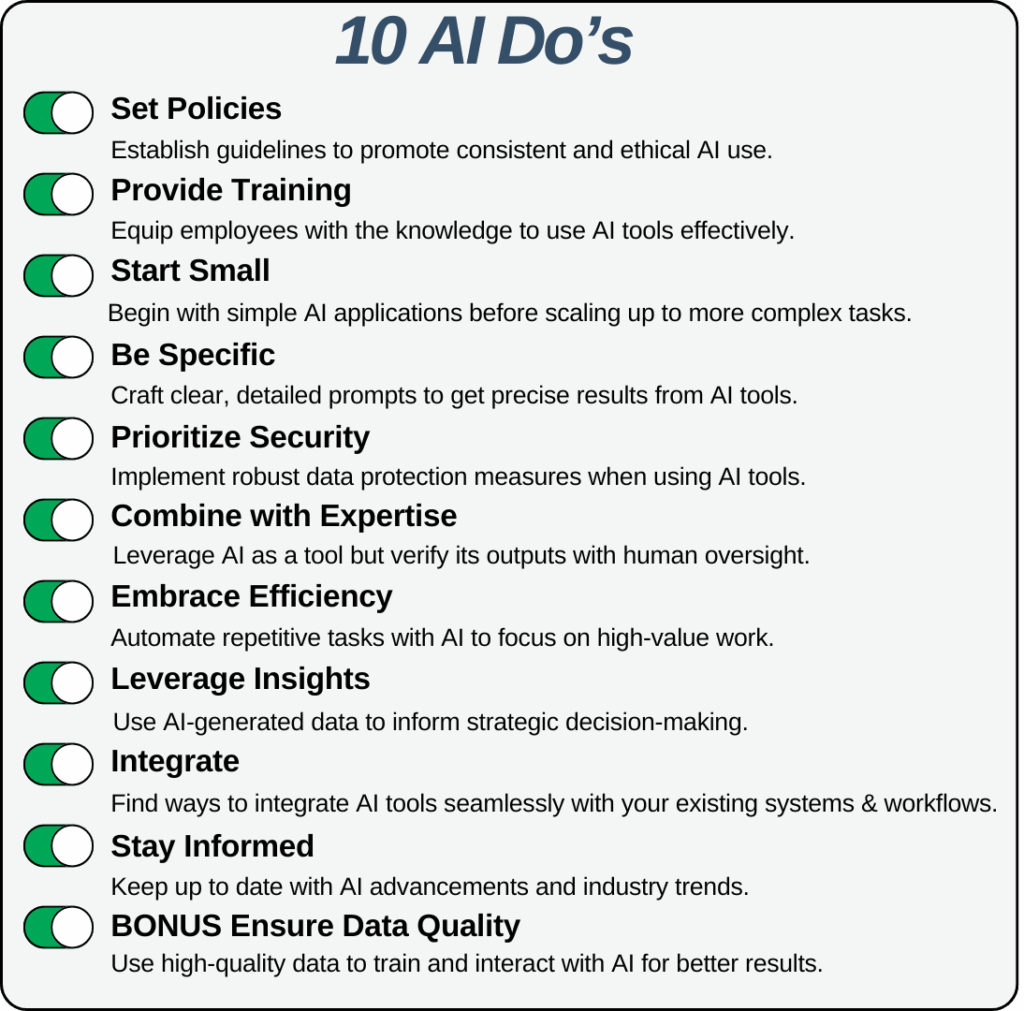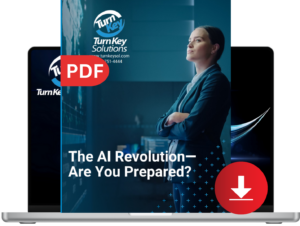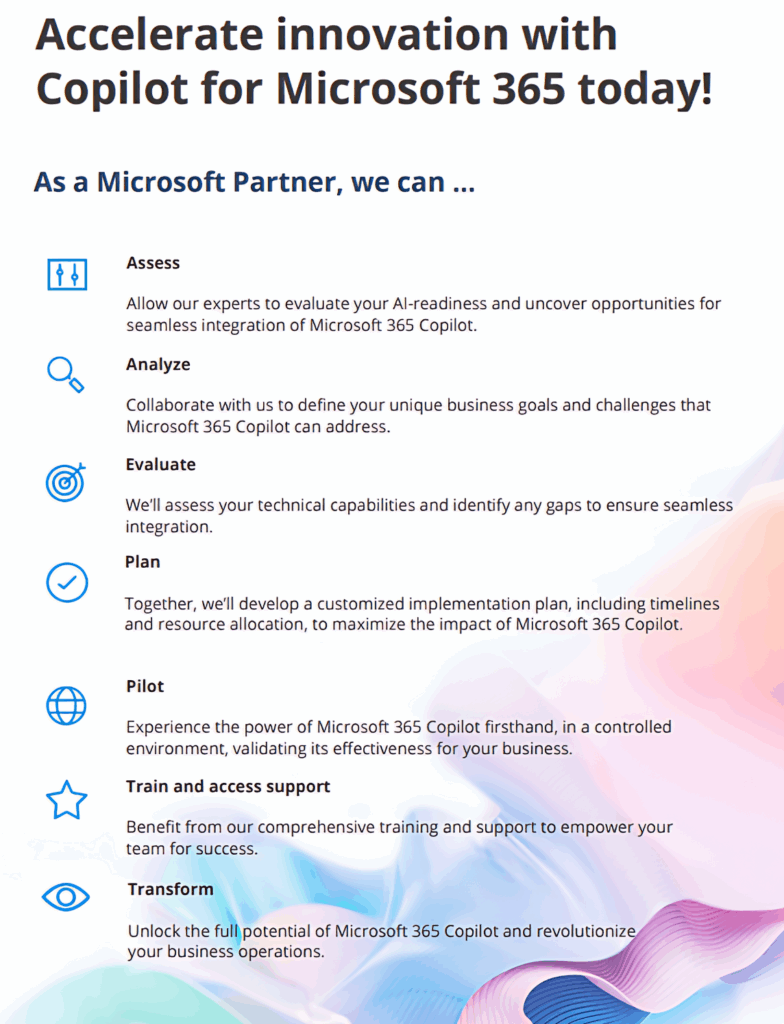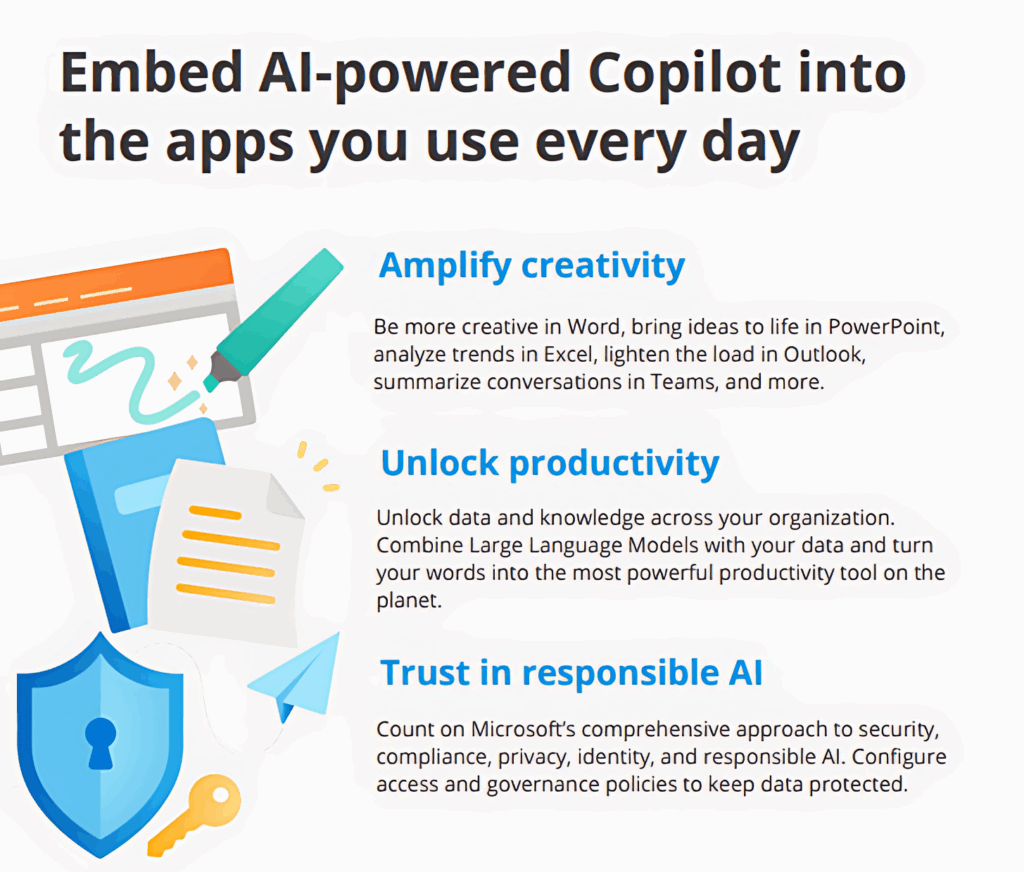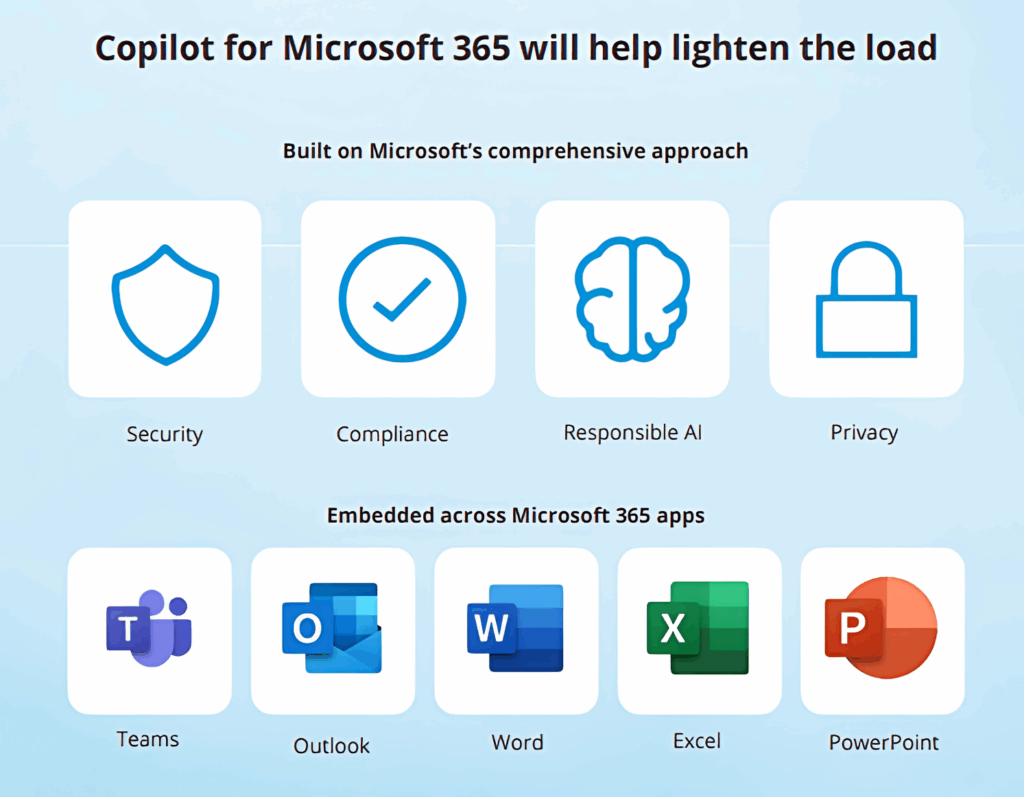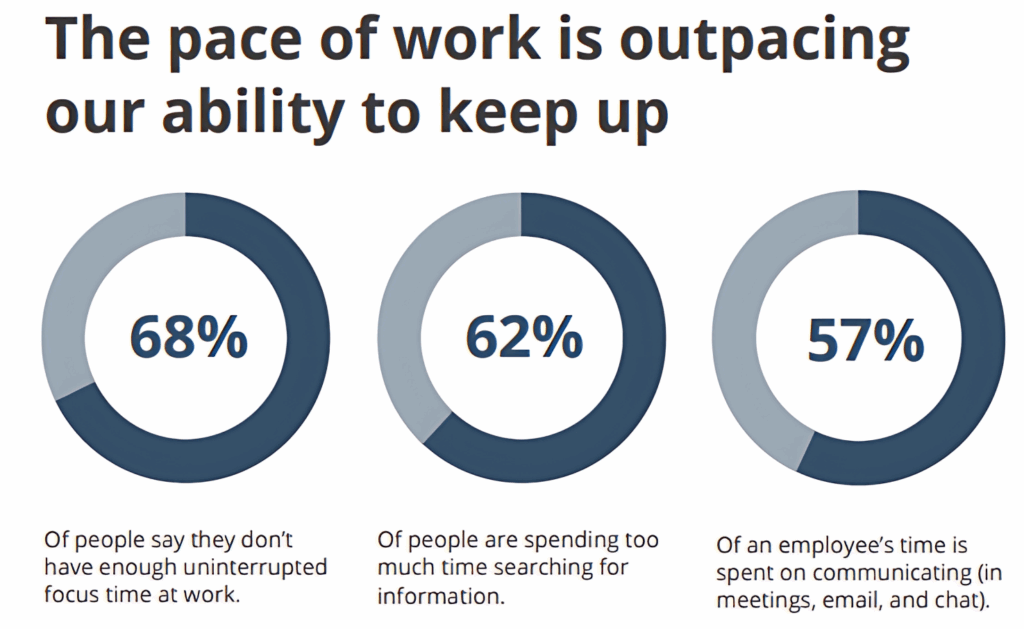
Artificial Intelligence For Business
Increase Efficiency and Production With AI Implementation
Artificial intelligence (AI) revolutionizes industries by driving efficiency, enhancing profitability, and reshaping business operations. Businesses increasingly leverage AI for advanced analytics, automation, and personalized customer engagement, positioning it as an essential tool for staying competitive.
Generative AI, in particular, accelerates content creation, enhances communication, and scales customer engagement to unprecedented levels. This isn’t just a technological enhancement; it marks a shift in how employees work and how companies communicate, making AI integration a necessity rather than a choice.
Ready to harness automation, analytics, or personalization? Let us guide you!
What is Artificial Intelligence (AI)?
Artificial Intelligence (AI) is learned intelligence; machines trained to recognize patterns, make decisions, and generate content based on data. Unlike human intuition, AI doesn’t “know” anything on its own. It learns from examples and rules and applies that learning to new situations. When used wisely, AI can enhance human expertise, not replace it, making businesses smarter, faster, and more adaptive.


Benefits of AI For Businesses
The benefits of AI in a business context include:
- Enables a faster rate of invention and more creativity in the workplace
- Increases the efficiency and thus the productivity of your employees
- Creates access to endless resources, such as images, text, or music
- Increases personalization for projects and products
- Underpins the efficient creation of marketing content
- Streamlines the sales process (such as with automated customer support)
- Improves quality control (especially in checking and optimizing computer code)
- Draft templates to text content almost instantly
- Further improves machine learning models
- Improves data analysis for more secure decision-making
Want More AI Tips and Training? We’ve Gotcha Covered!
Sign up for our free 24-week AI training program to start receiving weekly AI Tips straight to your inbox.
Not sure where to start with AI? We’ll help you figure it out.
Here Are Some Of The Ways For Businesses To Incorporate Generative AI:
- Personalized Customer Experiences
- Presentations & Graphics Creation
- Chatbots for Customer Support
- Data Analysis and Insights
- Product Design and Prototyping
- Supply Chain Optimization
- Dynamic Pricing Strategies
- Human Resources and Recruitment
- Predictive Maintenance

Artificial intelligence (AI) tools like Microsoft Copilot can transform the way your business operates but ensuring the proper security measures are in place can be challenging, which can potentially put your data at risk. AI can expose your business to risks such as leaking sensitive information or, worse, leaving it vulnerable to a cyberattack. To help you securely integrate AI into your operations, here are 10 key steps to consider when your business uses an AI tool such as Microsoft Copilot.
10 Ways to Stay Secure While Using AI:
Conduct a Security Audit
Schedule an infrastructure audit before adopting AI to identify vulnerabilities. Regular audits (at least yearly) help mitigate new risks. A third-party data risk expert can streamline the process and uncover potential threats.
Set Proper User Permissions
Assign specific roles and permissions to employees to control access to Copilot, ensuring only authorized users can interact with sensitive data. These established roles and permissions can greatly reduce the risk of misuse or accidental exposure of confidential information.
Use Sensitivity Labels
Apply sensitivity labels to AI-generated outputs, classifying data based on its level of confidentiality. These labels allow sensitive information to be handled with the appropriate level of protection, such as encryption and content markings.
Implement Data Access Controls
Limit access to AI outputs based on the job roles and responsibilities. Make sure that only those who need to see certain information can access it. This strategy will help minimize the potential for unauthorized access or internal data breaches.
Educate Your Team on Responsible AI Use
Conduct regular employee training sessions on how to use AI tools like Copilot, responsibly. Confirm they understand the importance of following security protocols and avoiding actions that could lead to data exposure or misuse.
Monitor User Prompts
Have a system in place to help track how your team is interacting with Copilot and what types of prompts they are using. Monitoring AI prompts that are used in AI tools ensures that individuals aren’t inadvertently requesting or generating sensitive information in ways that could pose a potential security risk.
Regularly Review AI Activity Logs
Periodically review AI activity logs related to Copilot’s use and be on the lookout for any unusual or suspicious actions that could escalate into a possible security threat.
Private vs. Public AI – Choose Wisely
When using generative AI tools, always choose secure, private options for handling sensitive business data. For example, Microsoft Copilot offers two versions: Web and Work. Make sure you and your team use the “Work” version to keep confidential information protected.
Use Multi-Factor Authentication (MFA)
Here’s a classic one – enable phishing-resistant multi-factor authentication for all users interacting with Copilot to add an extra layer of security. MFA requires users to verify their identity with more than just a password, reducing the likelihood of unauthorized access to your sensitive data or systems.
Stay Informed About AI Security Best Practices
AI is consistently evolving at a rapid rate, and so are the associated security challenges along with it. Stay up-to-date with the latest security best practices, especially those specific to AI and tools like Microsoft Copilot, so your business remains secure against the newest threats coming around the corner.

What Are AI Pillars and How to Define Yours
Establishing AI pillars is a strategic move that helps businesses define how AI will be used, governed, and scaled across the organization. These pillars act as guiding principles, ensuring that AI adoption aligns with your company’s values, operational goals, and customer expectations. AI pillars are not just technical standards; they’re a framework for responsible innovation.
They help you answer critical questions:
- How do we protect customer data?
- Where should human oversight remain essential?
- How do we ensure transparency in AI-driven decisions?
- What do we expect from our AI vendors and partners?
By defining these pillars early, businesses can reduce risk, build trust, and create a clear roadmap for AI integration.
Four Key Pillars to Consider:
- Data Ethics and Privacy
- Define what types of data AI can access and analyze.
- Implement protocols for anonymization, encryption, and secure storage.
- Ensure compliance with data protection regulations and customer consent policies.
- Transparency and Disclosure
- Clearly communicate how AI is used in your services.
- Provide visibility into AI decision-making processes.
- Make it easy for customers to understand when they’re interacting with AI vs. a human.
- AI’s Role in Business Processes
- Identify which processes benefit from automation and which require human judgment.
- Maintain human-led oversight for critical decisions, especially those impacting customer experience or compliance.
- Use AI to enhance (not replace) your team’s capabilities.
- Vendor and Partner Expectations
- Set clear standards for ethical AI development and deployment.
- Choose partners who align with your values and can demonstrate transparency, reliability, and compliance.
- Require vendors to provide documentation and accountability for their AI models.

Steps to Follow When Implementing AI Solutions
Step 1: Define the Objective
Step 2: Gather and Prepare Data
Step 3: Choose an AI Model
Select a model that fits your use case. For example, use classification models for sorting data, generative models for content creation, or forecasting models for predicting trends. Consider whether off-the-shelf solutions or custom models are more appropriate.
Step 4: Train the Model
Step 5: Integrate and Deploy
Step 6: Monitor and Optimize
Step 7: Train Your Team
When to Use AI and When to Avoid It
When AI Is a Good Fit:
- Repetitive Tasks: Automating routine processes like data entry, scheduling, or document classification.
- Pattern Recognition: Identifying trends in customer behavior, financial transactions, or operational metrics.
- Natural Language Processing: Enhancing customer support, summarizing documents, or translating content.
- Predictive Analytics: Forecasting demand, identifying risks, or optimizing logistics.
When AI Is Not the Right Tool:
- Tasks Requiring Nuanced Judgment: Strategic planning, ethical decision-making, or sensitive negotiations.
- Poor or Limited Data: AI relies on quality data. If your data is sparse, biased, or inconsistent, results will be unreliable.
- High-Stakes Decisions: Where errors could lead to legal, financial, or reputational harm, human oversight is essential.
Choosing the Right Type of AI:
- Machine Learning (ML): Best for identifying patterns and making predictions based on structured or unstructured data.
- Deep Learning: Ideal for complex tasks like image recognition, speech processing, or analyzing large datasets.
- Generative AI (GenAI): Useful for creating content, automating communication, and enhancing creativity, but should be used with caution and oversight.

